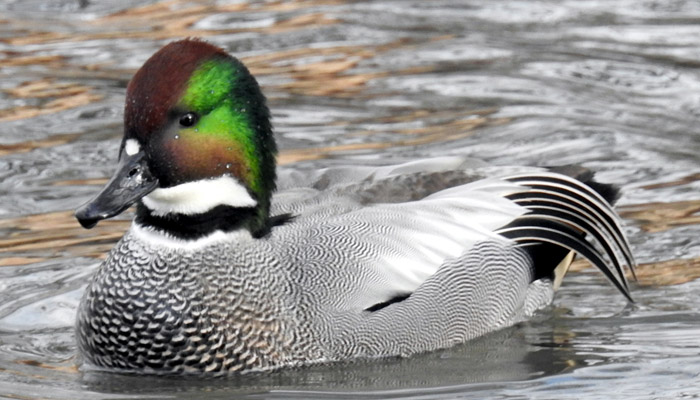
English: Falcated Duck, Bronze-capped Teal
Russian: Касатка
German: Sichelente
French: Canard a faucilles
Mongolian: Гэзэгт нугас
Japanese: ヨシガモ (Yoshi-gamo)
Body length: 46 - 53 cm
Wing span: 79 - 91 cm
Breeding season: May-September
Egg number: 4-8
Egg color: Pale creamy white, sometimes greenish or buffish tinged.
Brood: 1 per year
Food:
Aquatic and terrestrial plants in wet meadows, marshes and ponds.
Status: Rare species. According to the IUCN Red List categories and
criteria, the species evaluated as – Near threatened.
Distribution and Range: Russian Federation, Japan, North eastern China, winters in
Southeast Asia. In Mongolia: breeds in small numbers in the Uvs Lake, estuary
of the Tes River, some lakes along the Orkhon, Selenge, Tuul, Kharaa, Khalkh,
Nomrog rivers basins, Ogii lake and Terkhiin Tsagaan lake at the Khangai
Mountain Range, Telmen, Erkhil, Buir and Tashgain Tavan Nuur lakes in Tarbagtai
Bulnain Range.
Habitat: Small taiga lake, lakes of forest steppes, rivers, channels,
swamps and occasionally large lakes.
Population and threats: Population abundance and threats have not assessed.
Conservation Measures: Included as Rare animal in the Annex to the Mongolian Government
Resolution #7 (2012) and the CMS Annex. About 7.7% of the species range is
protected within the NSPAN.
Further Actions: Survey and monitor the migration path, ensure peaceful,
undisturbed breeding habitat, improve conservation measures in the areas
covered within the NSPAN and the related international Conventions.